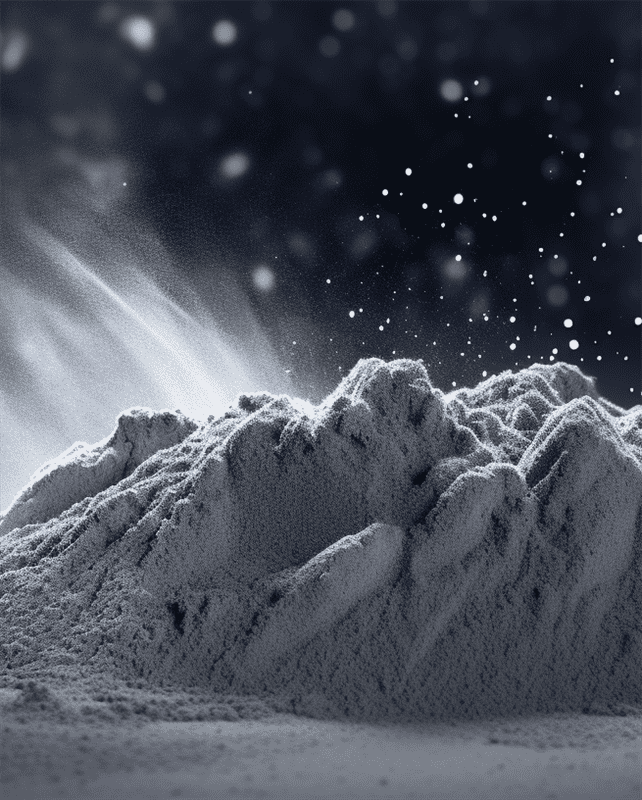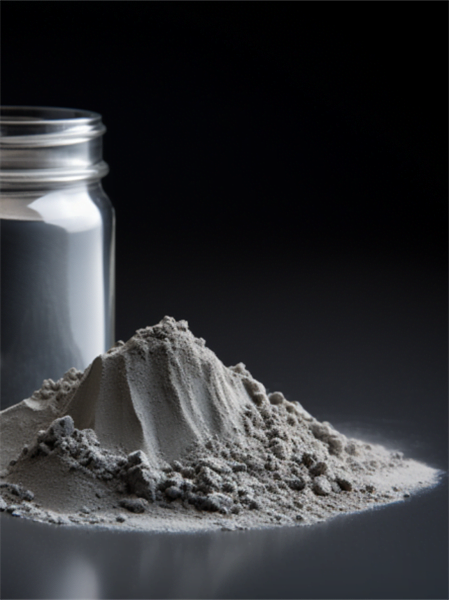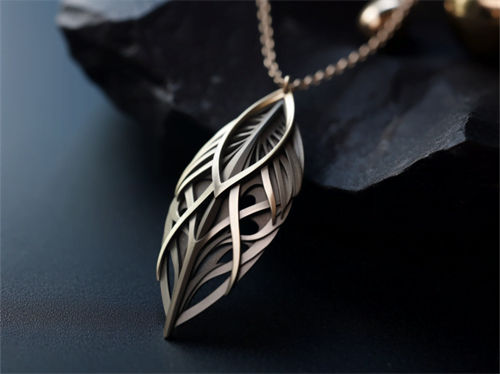Volframpulver: Typer, Installation, Välj
Innehållsförteckning
Volframpulver är ett fint grått pulver tillverkat av volframmetall. Det har unika egenskaper som gör det användbart i många industriella och kommersiella tillämpningar. Den här guiden ger en omfattande översikt över volframpulver, dess tillverkningsmetoder, tillämpningar, leverantörer, kostnader och mycket mer.
Översikt över volframpulver
Volframpulver, även känt som volframmetallpulver eller Wolframpulver, avser partiklar i mikronstorlek av ren elementär volfram. Det framträder som ett gråsvart pulver som vid beröring känns tungt och grynigt.
Volfram har den högsta smältpunkten av alla metaller och är exceptionellt tät och hård. Detta ger volframpulver utmärkta högtemperaturegenskaper samt slitstyrka, hårdhet och hållbarhet. Samtidigt kan det legeras med andra metaller eller formas till former genom pulvermetallurgiska tekniker.
Några viktiga egenskaper och kännetecken för volframpulver inkluderar:
- Hög densitet - 19,3 g/cm3, nästan dubbelt så hög som för bly
- Hög smältpunkt - 3422°C, den högsta av alla metaller
- Låg värmeutvidgningskoefficient
- Utmärkt termisk och elektrisk ledningsförmåga
- Motståndskraft mot slitage, erosion och ljusbågar
- Biokompatibel och icke-toxisk i ren form
- Gråsvart färg med metallisk lyster
Volframpulver finns i olika partikelstorlekar som sträcker sig från 1 mikron till 150 mikron. Partikelformen kan vara sfärisk, flockig eller oregelbunden. Finare pulver ger mer enhetlig blandning och bättre förtätning. Grova partiklar är att föredra för applikationer som volframvikter.
Den viktigaste tillverkningsprocessen som används för att producera volframpulver är vätereduktion av volframoxider. Rent volframpulver är ljust silvergrått medan orena kvaliteter verkar bruna eller svarta.

Tillämpningar och användningsområden för volframpulver
Volframpulver har olika användningsområden inom följande stora sektorer:
Militär och försvar
- Volframlegeringar i penetratorer med kinetisk energi, pansarbrytande ammunition, vikter i missiler och raketer
- Kulor och dartpilar av volframkarbid i pansarvärnsammunition
- Strålningsskydd i kärnreaktorer
Fordon
- Volframfilament i glödlampor och lampor
- Kontaktpunkter och elektriska komponenter som motstår ljusbågar
- Kullager av volframkarbid och andra slitstarka delar
- Volframlegeringar för motorkomponenter som ventiler och turboladdare
- Motvikter och vibrationsdämpande komponenter
Tillverkning
- Skärverktyg, matriser, stansar tillverkade av volframkarbid
- Volframelektroder för svetsning
- Tillsätts till stål för att göra höghastighetsverktygsstål
- Komponenter för elektriska kontakter och motståndsvärme
- Indunstningsbåtar och deglar av metall
Elektronik
- Kylflänsar och komponenter för termisk hantering av halvledare
- Förångningsbåtar och värmeelement
- Fältemissionsspetsar, elektronemitterare och katoder
- Kontakter, anslutningsdon och ledningar
- Avskärmning mot strålning
Hälso- och sjukvård
- Kollimatorer, filter och avskärmningar i tät volframlegering för röntgenapparater och strålbehandlingar av cancer
- Volframpulver blandat med polymerer för tillverkning av täta kompositer för strålningsskydd
- Ballastvikter för medicinsk utrustning
- Komponenter till medicinska implantat som stentar och benskruvar
Andra tillämpningar
- Motvikter i volframlegering för applikationer som golfklubbor, yachtkölar, rotorblad för helikoptrar
- Vikter för sportutrustning som dart, bowlingklot, golfklubbsskallar
- Fiskedrag, dykdrag
- Komponenter till smycken
- Ballast i motorsportfordon
Olika typer av volframpulver
Volframpulver finns i olika kvaliteter som klassificeras utifrån partikelstorlek, form, renhetsgrad, pulverdensitet och avsedda användningsområden:
| Typ | Beskrivning |
|---|---|
| Ultrafin | Partikelstorlekar under 1 mikron, hög ytarea, används i kemiska processer |
| Submikron | 1-5 mikron, sfärisk morfologi, hög renhet, används i cementerad volframkarbid |
| Fina | 1-10 mikron, hög förtätning, för volframkvarnprodukter |
| Medium | 10-40 mikron, måttlig ytarea, allmän användning inom pulvermetallurgi |
| Grov | 40-150 mikron, låg ytarea, används i vikter |
| Ren | 99.9%-99.99% volfram, låga föroreningshalter, ljus silvergrå |
| Kommersiell | 97%-99% volfram, innehåller mindre orenheter, gråaktig eller brunaktig |
| Formad | Flingor, nålar, dendriter eller anpassade former, specialapplikationer |
Specifikationer för volframpulver
Volframpulver för industriellt bruk måste uppfylla en rad fysiska, kemiska och morfologiska specifikationer enligt internationella standarder som ISO, ASTM, DIN, JIS, GB och GOST:
| Parameter | Typiska specifikationer |
|---|---|
| Partikelstorlek | 1 - 150 mikrometer |
| Pulverform | Sfärisk, oregelbunden, flagnande |
| Skenbar densitet | 2 - 3 g/cm3 för osinterat pulver |
| Tappdensitet | 4 - 6 g/cm3 för osinterat pulver |
| Renhet | 99% till 99.995% volfram |
| Syrehalt | <100 - 1000 ppm |
| Kolinnehåll | <100 - 500 ppm |
| Föroreningar från tungmetaller | Gränsvärden för delar per miljon för varje element |
| Yta | 0,5 - 15 m2/g för pulver |
| Färg | Ljust silvergrå till brungrå |
| Flödeshastigheter för pulver | Test av Hall-flödesmätare |
De optimala pulveregenskaperna som partikelstorleksfördelning, morfologi, skenbar densitet och tappdensitet beror på press- och sintringskraven för den slutliga komponenten. Anpassade volframpulverblandningar formuleras för att tillgodose behoven i varje applikation.
Design- och teknikstandarder
Komponenter för volframpulvermetallurgi är utformade enligt olika internationella standarder för sammansättning, tillverkning, kvalitetskontrolltestning och applikationer:
| Standard | Detaljer |
|---|---|
| ASTM B777 | Standardspecifikation för volframbaserade legeringar med hög densitet |
| ISO 13320 | Specifikation för hårdmetaller - Metallpulverbriketter |
| MIL-T-21014 | Militär specifikation för volfram- och volframlegeringsverksprodukter |
| SAE-AMS-T-21014 | Aerospace materialspecifikation för volframkvarnformar |
| GB/T 13383-2008 | Kinesisk standard för volframstavar och -stänger |
| JIS C 2805 | Japansk industristandard för volframkvarn produkter |
| DIN 2240 | Tysk standard för produkter från tungmetallverk |
Komponent- och pulvertillverkare säkerställer efterlevnad av tillämpliga standarder för kemi, mikrostruktur, mekaniska egenskaper, oförstörande provning, kvalitetssäkring med mera.
Tillverkning och produktion
Volframmetallpulver framställs huvudsakligen genom vätereduktion av volframoxider:
Volframoxidpulver + väte → Volframpulver + vattenånga
Detta är en exoterm process som utförs vid 700-1000°C i en vätgasatmosfär i specialiserade reduktionsugnar.
De viktigaste stegen i volframpulverproduktionen är:
- Gruvdrift och utvinning - Tungstenmalmer som wolframit och scheelit bryts, krossas, mals och koncentreras genom skumflotation för att producera ammoniumparatungstate (APT).
- Omvandling till oxider - APT sönderdelas termiskt till volframtrioxid (WO3) som mals till ett fint gult/brunt pulver.
- Vätgasreduktion - WO3-pulver genomgår reduktion med torr vätgas i en skjut-, band- eller roterugn vid temperaturer upp till 1000°C.
- Fräsning och klassificering - Det reducerade volframpulvret mals i kulkvarnar, klassificeras i olika partikelstorlekar och genomgår ytterligare bearbetning.
- Blandning och komprimering - Pulver blandas, smörjs, packas till "gröna" förformar och sintras till färdiga komponenter.
Högrena kvaliteter kan genomgå ytterligare vätgas- eller vakuumavgasning för att sänka föroreningsnivåerna. Formade och ytbehandlade pulver tillverkas med hjälp av specialiserade tekniker. Pulvrets morfologi, storleksfördelning, renhet och kemi kontrolleras noggrant för att uppfylla behoven för varje applikation.

Leverantörer och prissättning
Några ledande globala leverantörer av volframpulver är bl.a:
| Företag | Plats |
|---|---|
| Buffalo Tungsten | USA |
| Midwest Tungsten | USA |
| TaeguTec | Sydkorea |
| Wolfram | Österrike |
| HC Starck | Tyskland |
| Xiamen Tungsten | Kina |
| JX Nippon Mining | Japan |
Priset på volframpulver beror på faktorer som:
- Renhet - Intervaller från US$50/kg för 97% volfram till över $1000/kg för 99,995% ultrafina pulver
- Partikelstorlek - Ultrafint under US$100/kg, pulver i mikronstorlek US$30-60/kg, grova kvaliteter billigare
- Kvantitet - Lägre priser för bulkkvantiteter i ton
- Egenskaper för pulver - Sfärisk och hög densitet föredras för pressningskostnad mer
- Produktens enhetlighet - Etablerade globala varumärken ger högre prissättning
Prisintervall:
- Lågt pris: $30-$50 per kg
- Medelhög kvalitet: $50-$150 per kg
- Hög renhet/prestanda: $150-$1000 per kg
Kontakta ledande leverantörer för exakta prisförslag baserat på dina specifikationer och inköpsvolymer.
Hur man väljer leverantörer av volframpulver
Här är tips för att välja pålitliga tillverkare och leverantörer av volframpulver:
- Granska företagets referenser, inklusive antal år i branschen, rykte och kunder
- Säkerställa att de kan anpassa pulveregenskaperna för att uppfylla dina krav
- Håll utkik efter jämn kvalitet, rigorösa tester och ISO 9001-certifiering
- Utvärdera deras produktionskapacitet och förmåga att skala upp utbudet vid behov
- Tänk på plats och logistik för effektiv leverans till dina anläggningar
- Begär prover för att testa pulverkvaliteten före storskaliga inköp
- Jämför priser från olika leverantörer för kostnadseffektivitet
- Säkerställa hög produktrenhet, tillförlitlighet och enhetlighet från parti till parti
- Kontrollera ledtider och lagertillgänglighet för att undvika lagersaldo
- Utvärdera flexibiliteten för små testbeställningar eller för att tillgodose brådskande förfrågningar
- Överväg mervärdestjänster som blandning, kemisk analys och anpassad förpackning
Installations- och användarhandbok
Förvaring och hantering
- Förvara volframpulvret i rena, torra och förslutna behållare på avstånd från fukt, gnistor och lågor
- Använd täckning med inert gas vid förvaring i mer än 6 månader
- Begränsa exponeringen för luft för att minimera oxidation
- Tillhandahåll lämplig ventilation och system för dammuppsamling
- Undvik kontaminering från smuts, oljor eller andra pulverböter
- Hantera med rena skopor och verktyg; använd personlig skyddsutrustning som masker, handskar och skyddsglasögon
- Förhindra ansamling av pulver på ytor för att minimera risken för dammexplosion
Bearbetning och drift
- Smörj pulvret med stearater eller vaxer före komprimering
- För pressning, använd verktygsstål eller volframkarbidformar smorda med zinkstearat
- Komprimera pulvret med hjälp av mjuka pressrörelser vid optimalt tryck
- För sintring, använd vätgas- eller vakuumugnar och kontrollerade värmeprofiler
- Följ rekommenderade sintringstemperaturer och -tider baserat på pulverkvaliteten
- Kyl långsamt de sintrade delarna i ugnen under inert atmosfär
- Ytterligare steg som infiltrering, värmebehandling eller HIP kan användas vid behov
- Iaktta säkerhetsåtgärder vid hantering av pulver och användning av utrustning
Underhåll
- Inspektera regelbundet pulverbehållare och förvaringsutrymmen med avseende på skador eller läckage
- Rengör omedelbart pulverspill för att förhindra ansamling av finfördelat material
- Kassera använt volframpulver och avfall på ett säkert sätt som farligt industriavfall
- Rengör regelbundet matriser, stansar och andra verktyg för pulverpressning
- Smörjning och underhåll av pressar enligt tillverkarens anvisningar
- Följ rekommenderade scheman för underhåll och omkalibrering av ugnen
För- och nackdelar med att använda volframpulver
Fördelar:
- Utmärkta högtemperaturegenskaper tack vare hög smältpunkt
- Slitage- och korrosionsbeständighet för lång livslängd på komponenterna
- Mycket hög densitet ger tyngd och tröghet
- Biokompatibel och icke-toxisk i ren form
- God termisk och elektrisk ledningsförmåga
- Låg värmeutvidgningskoefficient
- Kan legeras för att optimera egenskaper som hårdhet
- Pulvermetallurgi möjliggör tillverkning av komplexa nätformade komponenter
- Återvinningsbar för utvinning av volfram
Nackdelar:
- Dyrt jämfört med andra metallpulver
- Begränsad global tillgång och produktionen koncentrerad till Kina
- Skör i omodifierat tillstånd, kräver legering eller sintring
- Utmanande att bearbeta i helt sintrat tillstånd
- Hög smältpunkt gör tillverkningen energikrävande
- Lägre duktilitet och slagtålighet jämfört med stål
- Benägen att oxidera vid förhöjda temperaturer
- Känslig för kontaminering under bearbetning

VANLIGA FRÅGOR
F: Vilka är de olika kvaliteterna av volframpulver som finns tillgängliga?
A: Huvudkvaliteterna klassificeras baserat på partikelstorlek (ultrafin, fin, medium, grov), renhet (99,9% till 99,995%), pulverform (sfärisk, oregelbunden, flagnande) och slutanvändning (allmän användning, pressning, svetsning etc.).
F: Vilken partikelstorlek är bäst för pressning och sintring?
S: En bimodal blandning av finare (1-10 mikron) och grövre (10-40 mikron) pulver är optimal, vilket förbättrar pulverflödet och gröndensiteten. Ultrafint pulver kan också användas.
F: Vilka är effekterna av föroreningar i volframpulver?
S: Föroreningar som kol, syre, koppar och järn kan försämra egenskaperna. Ultrahögrena kvaliteter har lägre föroreningsgrad för krävande applikationer.
F: Hur komprimeras och sintras volframpulver?
A: Pulvret pressas till en grön kompakt form med hjälp av högt tryck i en matris och sintras sedan vid temperaturer nära 2000°C under väte- eller vakuumatmosfär.
F: Vilka legeringselement kan läggas till volframpulver?
A: Volfram legeras med element som nickel, järn, kobolt, koppar och rhenium för att förbättra hållfasthet, duktilitet och andra egenskaper.
F: Vilka är de rekommenderade förvaringsmetoderna för volframpulver?
A: Förvaras i slutna behållare på en ren, torr plats skyddad från fukt och föroreningar. Begränsa luftexponeringen. Använd inert gas för långtidsförvaring över 6 månader.
F: Hur återvinns och återanvänds volframpulver?
A: Skrotpulver och fast volfram kan återvinnas genom krossning, slipning, blandning och omkomprimering till nya produkter. Ingen försämring av egenskaperna sker.
F: Vilka är de viktigaste användningsområdena för tunga legeringar av volfram?
A: Militär- och försvarskomponenter som penetratorer för kinetisk energi, strålningsskydd, motvikter, ballastvikter, vibrationsdämpning inom flyg- och fordonstillämpningar etc.
Fråga: Vilka är fördelarna med att använda volfram jämfört med utarmat uran?
S: Volfram är icke-radioaktivt, säkrare att hantera, mindre kontroversiellt och lättare att få tag på än utarmat uran, samtidigt som det har samma densitet.
Dela på
MET3DP Technology Co, LTD är en ledande leverantör av lösningar för additiv tillverkning med huvudkontor i Qingdao, Kina. Vårt företag är specialiserat på 3D-utskriftsutrustning och högpresterande metallpulver för industriella tillämpningar.
Förfrågan för att få bästa pris och anpassad lösning för ditt företag!
Relaterade artiklar

Högpresterande segment för munstycksvingar: Revolutionerande turbineffektivitet med 3D-utskrift i metall
Läs mer "Om Met3DP
Senaste uppdateringen
Vår produkt
KONTAKTA OSS
Har du några frågor? Skicka oss meddelande nu! Vi kommer att betjäna din begäran med ett helt team efter att ha fått ditt meddelande.

Metallpulver för 3D-printing och additiv tillverkning
FÖRETAG
PRODUKT
cONTACT INFO
- Qingdao City, Shandong, Kina
- [email protected]
- [email protected]
- +86 19116340731








